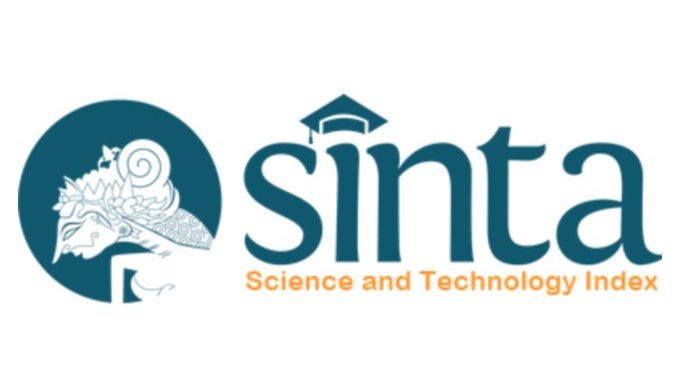Diagnosis dan Tatalaksana Antraks
DOI:
https://doi.org/10.55175/cdk.v50i12.985Keywords:
Anthrax, diagnosis, managementAbstract
Anthrax is a zoonotic disease caused by the bacterium Bacillus anthracis. The source of anthrax transmission to humans is usually through contact with infected products or with infected ruminants such as goats, sheep, cattle, and buffalo. Anthrax is a priority for the Ministry of Health and the Ministry of Agriculture’s zoonotic control program. Addressing the significant public health impacts, economic losses, and bioterrorism threats requires a comprehensive interdisciplinary and community response. The knowledge and skills of medical personnel for earlier diagnosis and to provide appropriate treatment need to be increased by updating guidelines and cross-sector collaboration.
Downloads
References
Kementrian Kesehatan Republik Indonesia. Pencegahan dan pengendalian penyakit antraks di Indonesia. Subdit Zoonosis. Indonesia; 2017.
Sari I, Apriliana S. Gambaran umum, prevalensi, dan pencegahan antraks pada manusia di Indonesia. Balai Penelitian dan Pengembangan Kesehatan Banjarnegara, Badan Litbang Kesehatan, Kementerian Kesehatan RI. Indonesia; 2020.
Direktorat Jenderal Pencegahan dan Pengendalian Penyakit. Surat edaran tentang waspada penyakit antraks. Jakarta: Kementerian Kesehatan Republik Indonesia; 2017:1-2.
Kementerian Kesehatan Republik Indonesia. Profil kesehatan Indonesia tahun 2018. Jakarta: Kementerian Kesehatan RI; 2019.
Martindah E. Faktor risiko, sikap dan pengetahuan masyarakat peternak dalam pengendalian penyakit antraks. Wartazoa. 2017;27(3):135-44.
Abawi I, Fibriana AI. Analisis spasial faktor lingkungan fisik daerah endemik antraks. Higeia. 2019;3(2):190-201.
Martin GJ, Friedlander A. Bacillus anthracis (Anthrax). Principles and practice of infectious diseases [Internet]. 2014 [cited 2023 July 7]. Available from: https://www.researchgate.net/publication/285708174_Bacillus_anthracis_Anthrax
Savransky V, Ionin B, Reece J. Current status and trends in prophylaxis and management of anthrax disease. Pathogens 2020;9(5):370.
CDC: Recommended specimens for microbiology and pathology for diagnosis of anthrax [Internet]. Available from: https://www.cdc.gov/anthrax/lab-testing/recommended-specimens/)
CDC: National Notiable Diseases Surveillance System (NNDSS): Anthrax (Bacillus anthracis): Case definition [Internet]. 2021. Available from: https://ndc.services.cdc. gov/case-denitions/anthrax-/
Kutmanova A, Doganay M, Zholdoshev S. Human anthrax in Kyrgyz Republic: epidemiology and clinical features. J Infect Public Health 2020;13:1161-1165.
Arora G, Misra R, Sajid A. Model systems for pulmonary infectious diseases: Paradigms of anthrax and tuberculosis. Curr Top Med Chem. 2017;17:2077-2099.
Zasada AA. Injectional anthrax in human: A new face of the old disease. Adv Clin Exp Med. 2018;27:553-558.
Hupert N, Person M, Hanfling D, Traxler RM, Bower WA, Hendricks K, et al. Development and performance of a checklist for initial triage after an anthrax mass exposure event. Ann Intern Med. 2019;170:521-30.
Vietri NJ. Does anthrax antitoxin therapy have a role in the treatment of inhalation anthrax Curr Opin Infect Dis. 2018;31:257-62.
Chihara S: Anthrax. In: Kellerman RD, Rakel DP et al, editors. Conn’s current therapy. Elsevier: Philadelphia; 2020.
Clark A, Wolfe DN. Current state of anthrax vaccines and key R & D gaps moving forward. Microorganisms 2020;8(5):651.
CDC: Anthrax vaccine recommendations [Internet]. Available from: https://www.cdc.gov/vaccines/vpd/anthrax/hcp/recommendations.html
Bower WA, Schiffer J, Atmar RL, Keitel WA, Friedlander AM, Liu L, et al. Use of anthrax vaccine in the United States: Recommendations of the advisory committee on immunization practices, 2019. MMWR Recomm Rep. 2019;68(4):1-14.
Vietri NJ, Tobery SA, Chabot DJ, Ingavale S, Somerville BC, Miller JA, et al. Clindamycin protects nonhuman primates against inhalational anthrax but does not enhance reduction of circulating toxin levels when combined with ciprofloxacin. J Infect Dis. 2021;223:319-325.
Downloads
Published
How to Cite
Issue
Section
License
Copyright (c) 2023 Wenly Susanto

This work is licensed under a Creative Commons Attribution-NonCommercial 4.0 International License.





















